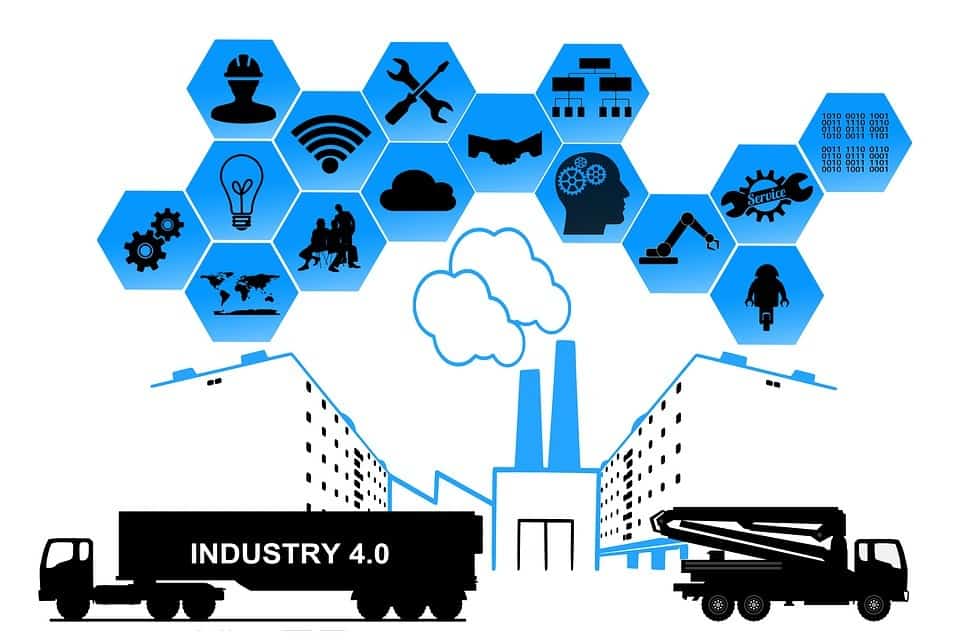The industry 4.0 revolution in industrial technology has been evolving and is inducting significant meaningful value additions from manufacturers to the end consumers! The industry equipment’s, computers and robots are connected through IoT and associate edge technologies, largely being driven by artificial intelligence and machine learning algorithms to make it happen.
Below are 10 use cases of AI in Industry 4.0 revolution talking about its implementation across various domains:
1. Complete automation in manufacturing with IoT & AI
The robots produced by FANUC plant outnumbers the humans by seven to one in Oshino, Japan which is home to only 9000 people. The best part is that the robots not only build themselves but also inspect to keep up the quality.
2. More reliable designs in less time span
IoT arrangements comprise of various components: physical gadgets like sensors, actuators and intuitive gadgets, the information accumulated from these gadgets is then broken down and applied to make it an important affair .Companies use this collected data using AI to create thousands of component designs in relatively shorter time. Large global giants like Autodesk has reduced the time of testing new ideas by applying ‘generative design’ in the manufacturing sector.
3. Communication in supply chain
IoT devices also communicate in a supply chain, keeping delays to a minimum as real-time updates and requests are instantly available without any human intervention. Fero Labs is a frontrunner in predictive communication using machine learning. This enables them to become increasingly insightful, predictive & preventive with their production line.
4. Quality checks
Manufacturing units that make complicated items like microchips and circuit sheets are making use of ‘machine vision’, which furnishes AI with amazingly high-goals cameras. The technology can pick even minute defects unmistakably, more reliably than the human eyes. With a cloud-based information processing system, defects are identified immediately and a response is automatically configured, sent and managed.
5. Reduced Environmental Impact
Siemens furnishes its gas turbines with many sensors that feed into an AI-worked information handling entire framework, which alters fuel valves so as to keep emissions as low as could be expected under the circumstances. The useful data that the sensors process is facilitated by the IoT devices and fed into AI-based analysis to create environment friendly, low consumption, high throughput systems at work.
6. Reducing waste
Similarly, steel industry utilizes AI innovations to eliminate ‘factory scaling’, which results in 3% of steel being lost. The AI has the capacity to lessen this by 15%, sparing a huge number of dollars all the while.
7. On-time Collaboration
Cloud-based AI is enabling companies to streamline correspondence between their numerous branches. Information gathered on production line can be deciphered and imparted (IoT) by/to different branches to automate material provision and other associated manual endeavors using AI.
8. Enhancement in Floor-to-Store time
AI powered smart factories works on lean inventories with in-built quality control mechanism post production. For example new RFID and GPS sensors can follow items ‘from floor to store’. Anytime, manufacturers can utilize these sensors to increase granular information like the features of the product, time spent by this product in load, time it took to take off the rack and so on. The kind of information picked up from the IoT can help organizations get a tighter grasp on quality control, on-time conveyances, and item determining.
9. Improved customer service
Nokia is making a comeback to the industry, with the help of AI in client management, making what it calls a ‘comprehensive, continuous perspective on the client experience’. This enables them to organize issues and distinguish key clients needing focus for enhanced services
10. Maintenance
Smart factories like those worked by LG are making utilization of Machine Learning to recognize and anticipate abandons in their apparatus before issues emerge. This takes into consideration prescient support that can eliminate sudden postponements, which can cost countless dollars. Obviously, the IoT can likewise utilize sensors on its assembling floors to oversee, arrange and prescient support and counteract down-time that can be expensive.


